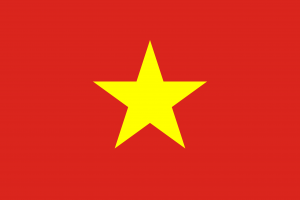Language/Vietnamese/Grammar/Possessive-Pronouns/az
 Հայերէն
Հայերէն Български език
Български език 官话
官话 官話
官話 Hrvatski jezik
Hrvatski jezik Český jazyk
Český jazyk Nederlands
Nederlands English
English Suomen kieli
Suomen kieli Français
Français Deutsch
Deutsch עברית
עברית हिन्दी
हिन्दी Magyar
Magyar Bahasa Indonesia
Bahasa Indonesia فارسی
فارسی Italiano
Italiano 日本語
日本語 Қазақ тілі
Қазақ тілі 한국어
한국어 Lietuvių kalba
Lietuvių kalba Νέα Ελληνικά
Νέα Ελληνικά Şimali Azərbaycanlılar
Şimali Azərbaycanlılar Język polski
Język polski Português
Português Limba Română
Limba Română Русский язык
Русский язык Српски
Српски Español
Español العربية القياسية
العربية القياسية Svenska
Svenska Wikang Tagalog
Wikang Tagalog தமிழ்
தமிழ் ภาษาไทย
ภาษาไทย Türkçe
Türkçe Українська мова
Українська мова Urdu
UrduHeading level 1[redaktə | mənbəni redaktə et]
In this lesson, you will learn about possessive pronouns in Vietnamese. Possessive pronouns are used to show ownership or possession of a particular noun or object. They are an essential part of Vietnamese grammar and are used frequently in everyday conversation.
What are Possessive Pronouns?[redaktə | mənbəni redaktə et]
Possessive pronouns are words that are used to indicate ownership or possession of a particular noun or object. In Vietnamese, possessive pronouns are formed by adding a suffix to the end of a noun or pronoun. This suffix changes depending on the gender and number of the noun or pronoun.
For example:
| Vietnamese | Pronunciation | North Azerbaijani |
|---|---|---|
| Áo của tôi | /aːw kɨ̌ə toːj/ | Mənim kofəm |
| Nhà của cô ấy | /ɲaː kɨ̌ə kǒʔ əːj/ | Onun evi |
| Bàn của chúng tôi | /baːn kɨ̌ə t͡ɕuŋ toːj/ | Bizim masamız |
In the examples above, the possessive pronouns "của tôi" (mine), "của cô ấy" (hers), and "của chúng tôi" (ours) are added to the end of the nouns "áo" (shirt), "nhà" (house), and "bàn" (table), respectively.
Types of Possessive Pronouns[redaktə | mənbəni redaktə et]
There are two types of possessive pronouns in Vietnamese: dependent and independent.
Dependent possessive pronouns are used before a noun to indicate possession. They always come after the noun they modify and are formed by adding the suffix "của" to a personal pronoun.
For example:
- Ví của tôi (my wallet)
- Ngôi nhà của bạn (your house)
- Sách của anh ấy (his book)
Independent possessive pronouns are used to indicate possession without a noun. They are formed by adding the suffix "ta" to a personal pronoun and are used after the subject of the sentence.
For example:
- Đây là của tôi (This is mine.)
- Đó là của chúng tôi (That is ours.)
- Đây không phải là của anh ấy (This is not his.)
Exceptions to the Rule[redaktə | mənbəni redaktə et]
There are a few exceptions to the rule when it comes to possessive pronouns in Vietnamese. For example, some words have their own unique possessive pronouns that do not follow the standard rule of adding a suffix to the end of a noun or pronoun.
One such example is the possessive pronoun for "mẹ" (mother), which is "con" in Vietnamese. So, to say "my mother" in Vietnamese, you would say "mẹ của tôi" or "con của tôi".
Another exception is the possessive pronoun for "bạn" (friend), which is "bè" in Vietnamese. So, to say "your friend" in Vietnamese, you would say "bạn của bạn" or "bè của bạn".
Conclusion[redaktə | mənbəni redaktə et]
Possessive pronouns are an essential part of Vietnamese grammar. They are used in everyday conversation to indicate ownership or possession of a particular noun or object. By learning possessive pronouns, you will be able to express yourself more clearly and effectively in Vietnamese.
Heading level 1[redaktə | mənbəni redaktə et]
In this lesson, you have learned about the basics of possessive pronouns in Vietnamese. To practice what you have learned, try using possessive pronouns in your everyday conversations and writing. As you become more comfortable with using possessive pronouns, you will be able to express yourself more clearly and effectively in Vietnamese.
Other lessons[redaktə | mənbəni redaktə et]
- 0 to A1 Course → Grammar → Past Tense Verbs
- 0-dan A1 səviyyəsinə qədər Kurs → Qrammatika → Mövcud Zamanda Fiillər
- 0 to A1 Course → Grammar → Adjectives
- 0 to A1 Course → Grammar → Adverbs
- 0 to A1 Course → Grammar → Future Tense Verbs
- 0 to A1 Course → Grammar → Pronouns and Personal Pronouns
- 0 to A1 Course
- Complete 0 to A1 Course → Grammar → Nouns and Gender
- 0 to A1 Course → Grammar → Modal Verbs

